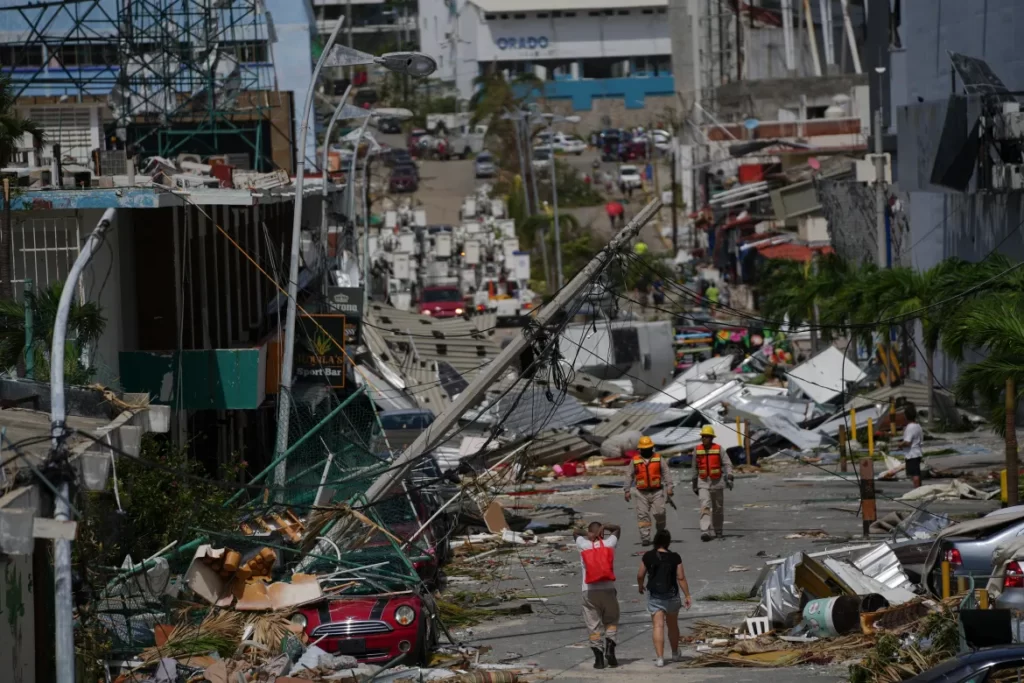Acapulco Mexico Hurricane Otis, a Category 5 storm, wreaked havoc on Acapulco, Mexico. The aftermath reveals a death toll of at least 27.
Mexican Security Minister Rosa Icela Rodriguez shared in a press conference on Thursday morning that four individuals are currently missing. The scenes the officials and military aid they encountered were nothing short of devastating.

Images and videos depict a landscape damaged by the storm’s wrath—high-rises reduced to rubble, roads submerged under storm surge and rain, forcing residents to navigate through several feet of murky water.
Mexican President Andrés Manuel López Obrador conveyed the damage inflicted by Hurricane Otis during a news conference, stating, “In all of Acapulco, there is not a standing electric pole.” He highlighted the urgency of the situation, revealing that over 1,000 workers are engaged in rebuilding the power grid to restore water services to the area.
The impact of the storm was widespread, with more than 500,000 homes and businesses losing power across Mexico’s Guerrero state, according to the power utility CFE. They reported that service had been reinstated for 40% of those affected.
Otis underwent a swift transformation, escalating from a tropical storm to an exceptionally hazardous Category 5 hurricane—marking the region’s most potent storm on record—in a mere 12 hours.
Following its inland movement, Hurricane Otis rapidly weakened, dissipating over the southern Mexican mountains by Wednesday afternoon. Despite this, the storm’s impact persists through heavy rains, posing an ongoing threat of flash flooding and mudslides in the region, according to the National Hurricane Center.
Mexican National Guard personnel are actively engaged in post-storm cleanup operations, tackling the clearance of stranded vehicles, fallen trees, and other debris strewn by the storm.
The Acapulco International Airport has temporarily halted operations.
Scientists attribute the rapid intensification of storms like Otis to the human-induced climate crisis, a trend that is becoming more prevalent. Rapid intensification, characterized by a wind speed increase of at least 35 mph within 24 hours or less, is typically fueled by ocean heat.
According to the National Oceanic and Atmospheric Administration, over 90% of the global warming observed in the last 50 years has occurred in the oceans.
Furthermore, the current presence of El Niño in the Pacific is contributing to elevated ocean temperatures, amplifying the conditions conducive to the rapid intensification of storms like Hurricane Otis.